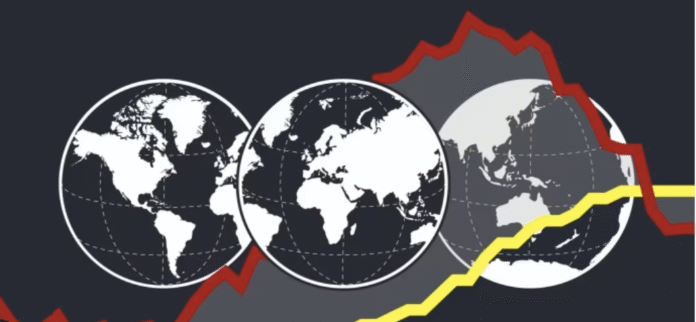In 2025, rising prices and shifting interest rates are shaping personal financial decisions in every corner of the globe. From supermarket trips in São Paulo, mortgage payments in London, to savings accounts in New Delhi, these economic forces are more than abstract headlines—they influence daily choices, household budgets, and future wellbeing. Let’s break down what inflation and interest rates mean, how they interact, and practical steps people everywhere can take to thrive amid economic change.
What is Inflation?
Inflation is the sustained increase in prices of goods and services across an economy. This could mean that the carton of milk or bus ticket that cost $1.00 last year costs $1.05 or $1.10 this year. While a mild level of inflation is a sign of healthy economic growth, high inflation erodes the real value of money for everyone—your paycheck buys less, savings shrink in purchasing power, and fixed expenses feel heavier.
How Does Inflation Affect Daily Life?
Cost of Living: Essentials like food, fuel, rent, and utilities become more expensive. Families may need to rethink budgets, trim non-essential spending, or seek alternative products.
Wages and Savings: If wages don’t keep pace with rising prices, people experience a drop in their “real income.” For savers, the returns on basic cash accounts often fail to match inflation, meaning your money loses value over time.
Debt Payments: If you have fixed-rate loans (like mortgages or student loans), inflation can make repayments easier in real terms, but floating-rate loans may become more costly when central banks hike interest rates in response to inflation.
What Are Interest Rates?
Interest rates are what lenders charge when giving loans, or what banks pay you to keep money in savings. These are set by central banks (like the US Federal Reserve, Bank of England, or Reserve Bank of India) and ripple through everything from mortgages and credit cards to business borrowing and savings accounts.
Why Do Interest Rates Change?
Central banks raise rates to cool down inflation (making loans more expensive and slowing spending) or lower them to stimulate borrowing and boost growth (making loans cheaper and encouraging investment).
Global Perspectives: How Economic Shifts Show Up Locally
United States: In recent years, inflation above 3% has meant higher prices for groceries, fuel, and rent. The Federal Reserve’s rate hikes increased borrowing costs for mortgages, auto loans, and credit cards, slowing the housing market and reducing discretionary spending.
United Kingdom: As inflation reached 3.5% in April 2025, household bills—energy, water, and council tax—spiked, squeezing family budgets. The Bank of England cut rates to support growth, but persistent inflation makes saving strategically more important than ever.
India: A fall in inflation led to lower rates on home loans, giving relief to borrowers. If inflation rises again, rates will likely increase, making new borrowing more expensive and disposable income tighter.
Brazil, South Africa, and Southeast Asia: High inflation can be even more disruptive. Price spikes in everyday goods strain lower-income households, often leading to increased government subsidies, price controls, or rapid interest rate adjustments.
The Relationship Between Inflation and Interest Rates
When inflation rises, central banks may raise interest rates to prevent the economy from overheating—leading to higher loan costs, lower borrowing, and sometimes slower wage growth.
When inflation falls or the economy slows, central banks often cut rates to make borrowing more affordable—encouraging spending, investment, and business expansion but offering weaker returns for savers.
Real-Life Impact: Everyday Financial Decisions
Borrowing
Loans and Mortgages: Rising rates increase monthly payments on new and variable-rate loans. Fixed-rate borrowers may benefit if inflation outpaces their locked repayment rate.
Credit Cards: Variable interest rates mean costs go up rapidly with central bank hikes; paying off high-interest debt quickly becomes paramount.
Saving and Investing
Savings Accounts: When inflation exceeds the interest rate earned, savings lose value in real terms. Look for high-yield accounts, certificates, or government bonds that keep pace with inflation.
Investments: Diversification is key. Real estate, stocks with strong pricing power, and inflation-resistant assets (like gold) help protect wealth during inflationary periods.
Spending and Budgeting
Household Budgets: Track essential vs. discretionary expenses. Adjust spending plans for rising costs in food, fuel, or utilities, and seek value alternatives.
Lifestyle Choices: People may put off major purchases, switch brands, or seek additional income streams when inflation bites.
Wages
Negotiating Pay: Workers may need to bargain for raises and seek employers who adjust pay to inflation. However, wage growth often lags behind inflation in most economies.
Entrepreneurship: Businesses face higher input and financing costs, requiring price adjustments or productivity boosts.
How to Thrive in a Volatile Economy
Stay Informed: Follow inflation and central bank updates in your country. Understand how global shifts impact local borrowing, spending, and saving.
Prioritize Essential Expenses: Monitor prices, seek deals, and budget for necessities first—food, shelter, utilities, transportation.
Optimize Savings: Choose financial institutions with competitive rates, use government-sanctioned savings schemes (like ISAs, high-yield term deposits), and periodically reassess options.
Diversify Investments: Hedge against inflation with stocks, real estate, commodities, or inflation-linked bonds. Avoid overexposure to any single asset or currency.
Review Debt: Favor fixed-rate over variable loans, pay down expensive debt early, and consider consolidating for savings in a rising rate environment.
Long-term Focus: Avoid knee-jerk reactions to short-term rate and price movements; a diversified financial plan will weather most storms.
Conclusion
Inflation and interest rates are forces every household, business, and nation must contend with. In 2025’s ever-changing landscape, their impact reaches from kitchen tables to boardrooms—and shapes financial futures for people everywhere. By understanding these forces and adapting personal finance habits, laypeople around the world can protect their purchasing power, manage risk, and take confident steps towards prosperity no matter what the next headline brings.


